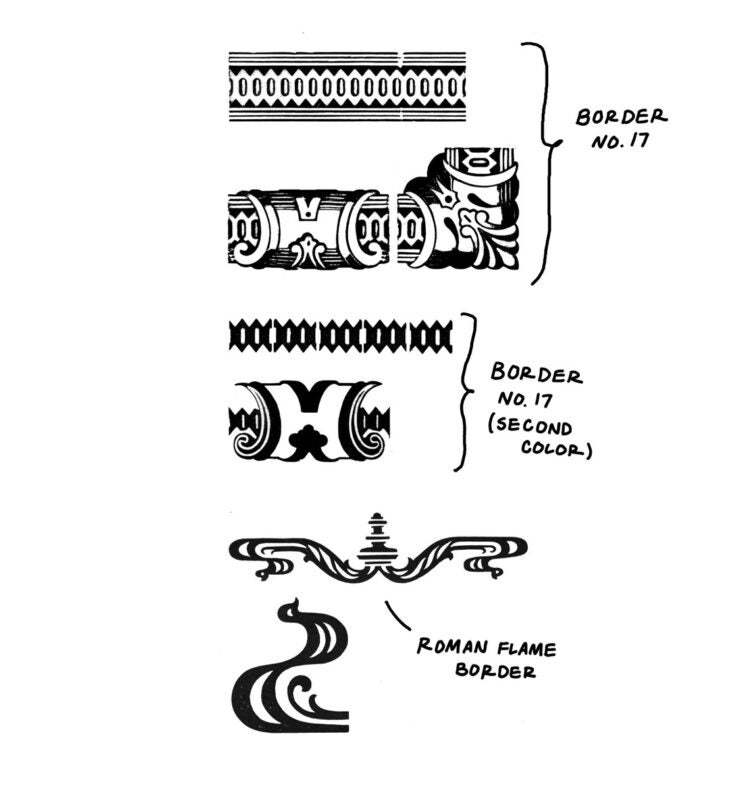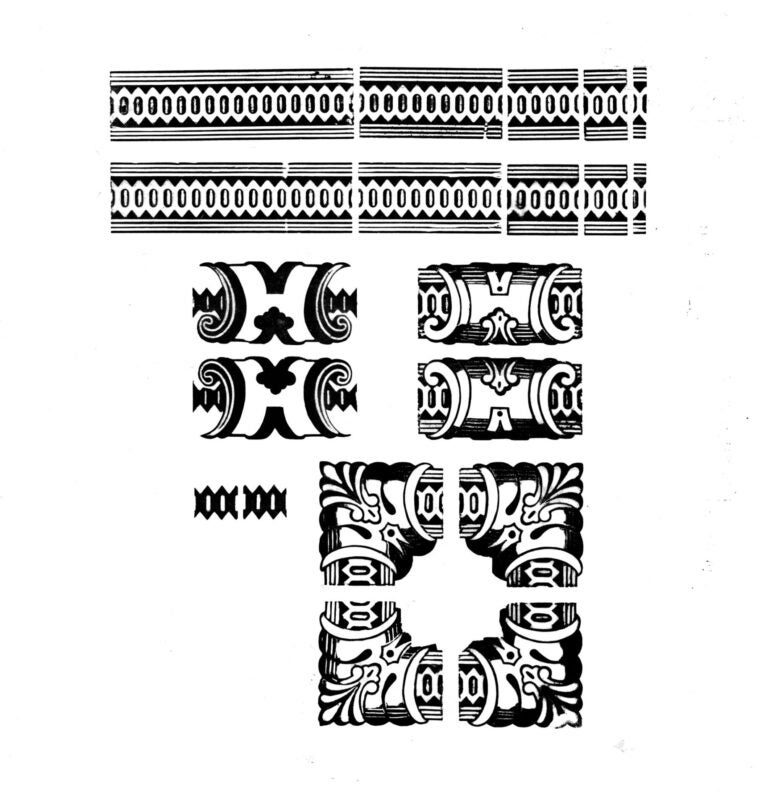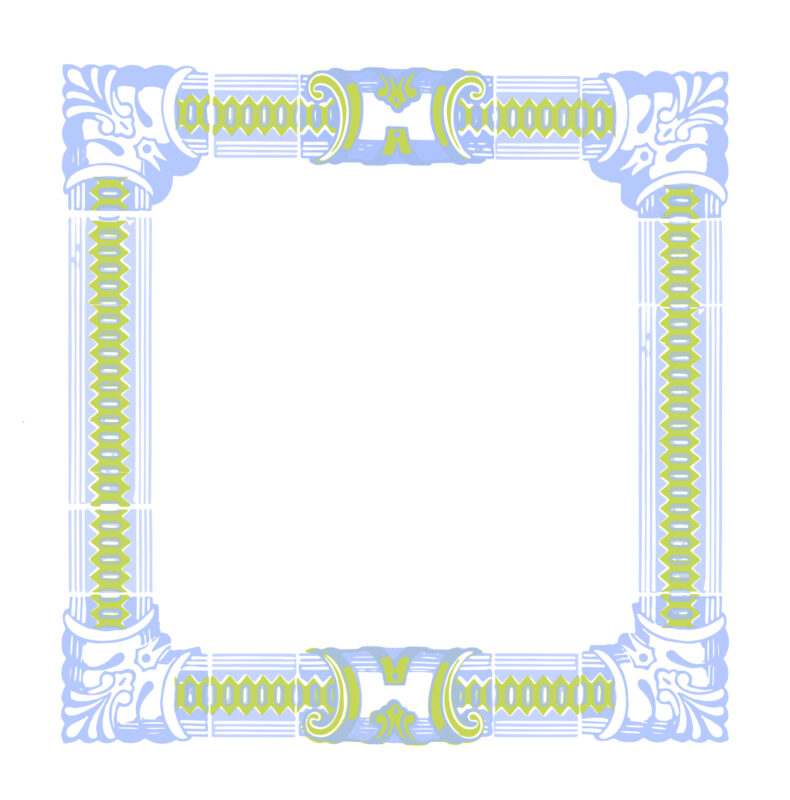Combination Borders
Assorted sizes
Box 189
Chromatic border & Roman flame set
Chromatic types, produced in register as corresponding pairs, were designed to be inked with two different colors and passed through the press twice, so that the first color would overlap the second in specified spots to create a third color. Chromatic types were shown regularly in foundry type specimen books of the 1840s and 1850s. Edwin Allen produced the first Chromatic wood types, as shown by George Nesbitt in his 1841 Fourth Specimen of Machinery Cut Wood Type. Both William H. Page and J.G. Cooley showed several pages of Chromatic type in their c.1859 wood type specimen books. Page showed these types in most of his specimen books in the 1870s. The high point of Chromatic wood type production came in 1874 when the William H. Page Wood Type Co. issued its 100-page Specimens of Chromatic Type & Borders. Though Hamilton, Morgans & Wilcox, and Heber Wells all showed samples of Chromatic types through the rest of the century, none of these ever reached the level of intricate precision attained in Page’s 1874 masterpiece.
Border No. 17
William H. Page & Company
8–line
This was first shown in the July 1865 broadside Specimens of Wood Borders Manufactured by W. H. Page & Co., Greenville, Conn. The design was renamed No. 165 after the completion of the company’s acquisition by the Hamilton Manufacturing Company in 1891.
Name used and first showing by other manufacturers: Tubbs-AWT/ Border No. 17/ 1883
Wells/ Border D/ c.1873
Border No. 17 (second color)
William H. Page & Company
8–line
This border was first shown chromatically in the April 1867 Wm. H. Page & Co.’s Specimens of Wood Type, Manufactured at Greenville, Conn.
This is the second-color component to Border No. 17. Only William H. Page & Company, the Hamilton Manufacturing Company, and Vanderburgh, Wells & Company showed this border as a two-color chromatic. The collection is missing the corner pieces to this set.
Roman Flame Border
The Hamilton Manufacturing Company
2–line
This was first shown in the Hamilton Manufacturing Company’s 1908 broadside, Specimen of Unit Gothics and Roman Flame Borders. A complete font of Roman Flame Border was made up of forty characters; only two of these, No. 22 and No. 27, are present in the collection.


